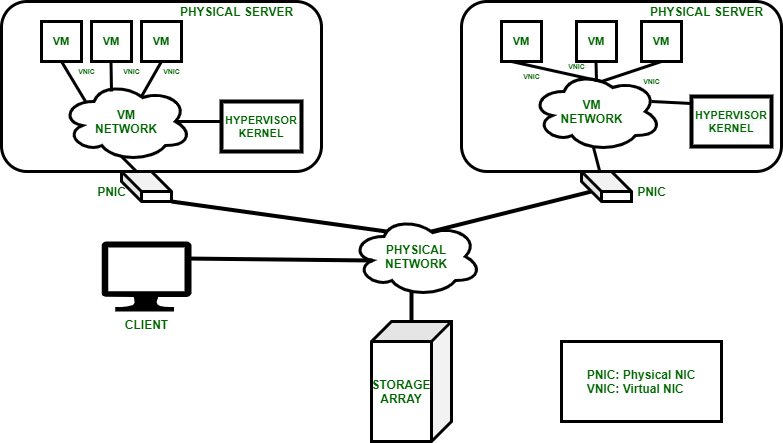Network virtualization is the process of abstracting the physical network infrastructure from the logical network. This allows for greater flexibility and efficiency in the way that networks are designed, deployed, and managed.
There are many benefits to network virtualization, including:
- Increased agility: Virtualization makes it easier to add or remove resources as needed, which can help businesses to respond more quickly to changes in demand.
- Reduced costs: Virtualization can help to reduce the cost of network infrastructure by consolidating multiple physical servers into a single virtual environment.
- Improved security: Virtualization can help to improve security by isolating different applications and workloads from each other.
- Enhanced performance: Virtualization can help to improve performance by offloading some of the processing burden from the physical hardware.
Network virtualization can be a powerful tool for streamlining your business. By abstracting the physical network infrastructure, virtualization can help you to improve agility, reduce costs, improve security, and enhance performance.
How Network Virtualization Works
Network virtualization works by creating a layer of abstraction between the physical network infrastructure and the logical network. This layer of abstraction is called a virtual network.
A virtual network is a software-defined network that is created and managed using virtualization software. Virtual networks can be used to create isolated networks for different applications or workloads. This can help to improve security and performance.
Benefits of Network Virtualization
As mentioned earlier, there are many benefits to network virtualization. Some of the key benefits include:
- Increased agility: Virtualization makes it easier to add or remove resources as needed, which can help businesses to respond more quickly to changes in demand. For example, if a business needs to increase the number of servers in its virtual environment, it can simply add more virtual machines without having to purchase and install new physical servers.
- Reduced costs: Virtualization can help to reduce the cost of network infrastructure by consolidating multiple physical servers into a single virtual environment. This is because the virtualization software can share the resources of the physical hardware among multiple virtual machines.
- Improved security: Virtualization can help to improve security by isolating different applications and workloads from each other. This is because each virtual machine has its own private network and its own set of security policies.
- Enhanced performance: Virtualization can help to improve performance by offloading some of the processing burden from the physical hardware. This is because the virtualization software can optimize the way that applications are run on the physical hardware.
How to Implement Network Virtualization
There are a number of different ways to implement network virtualization. Some of the most common methods include:
- Software-defined networking (SDN): SDN is a networking architecture that uses software to control the network infrastructure. SDN can be used to create virtual networks and to manage the traffic that flows between them.
- Network function virtualization (NFV): NFV is a technology that allows network functions to be virtualized. This means that network functions such as firewalls, load balancers, and routers can be run on software-based appliances instead of physical hardware.
- Virtual private networks (VPNs): VPNs are a way to create secure connections between remote networks. VPNs can be used to create virtual networks that are isolated from the public internet.
The Future of Network Virtualization
Network virtualization is a rapidly growing field. As the demand for more agile, secure, and efficient networks continues to grow, network virtualization will become increasingly important.
Some of the key trends that are driving the growth of network virtualization include:
- The increasing adoption of cloud computing: Cloud computing is a major driver of network virtualization. As more and more businesses move their workloads to the cloud, they need to find ways to manage their network resources more efficiently. Network virtualization can help businesses to do this by providing a way to consolidate their network resources and to manage them as a single entity.
- The growth of the Internet of Things (IoT): The IoT is another major driver of network virtualization. As the number of connected devices continues to grow, businesses need to find ways to manage their network traffic more effectively. Network virtualization can help businesses to do this by providing a way to isolate different types of traffic and to prioritize traffic based on its importance.
- The increasing demand for security: Security is a major concern for businesses of all sizes. Network virtualization can help businesses to improve their security posture by providing a way to isolate different applications and workloads from each other. This can help to prevent unauthorized access to sensitive data.
Conclusion
Network virtualization is a powerful technology that can help businesses to streamline their networks and to improve their agility, security, and performance. As the demand for more agile, secure, and efficient networks continues to grow, network virtualization will become increasingly important.






